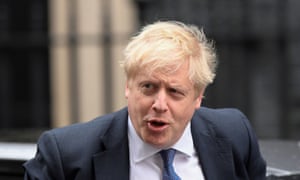When the Conservatives won the election in December, the spring reshuffle was soon touted as a strategic reshaping event for Whitehall. Around Christmas, the word on the street was that some departments would be closed and others forcibly merged, while new ministries that better reflected the government’s domestic priorities would be created. More recently, however, No 10 seemed to cool on such a grand governmental restructuring. On the eve of Thursday’s reshuffle, expectations of significant changes were low.
Little did we know what awaited. The reshuffle turned out to be a very major event, but not for the reasons that had once been trailed. Instead, No 10 went straight into battle with by far the most powerful department in Whitehall, the Treasury. Mr Johnson and his advisers clearly planned this confrontation. He told the chancellor, Sajid Javid, that he wanted much closer control of Treasury decisions, with a new set of Treasury ministerial advisers answerable to No 10, not the chancellor in No 11. Mr Javid put up a fight for his department’s autonomy – and lost. Just before midday he resigned, making him the shortest-serving chancellor in 50 years.
It is one of the axioms of British government that the relationship between the prime minister and the chancellor is the axis on which an administration is built. Think Thatcher-Howe and later Thatcher-Lawson. Think Blair-Brown or, more recently, Cameron-Osborne. For that axis to be smashed within two months of an election victory and less than a month before what is now being billed as the defining budget statement of the new parliament on 11 March is an act of either recklessness or desperation. Either way, it shows that something was badly rotten at the heart of the Conservative government.
The question left by the departure of Mr Javid is where the rot lay. One obvious reading is that No 10 under Mr Johnson and his chief adviser, Dominic Cummings, are demanding total control of the government, and that Mr Javid, who had rowed with No 10 over HS2 and other spending issues, was too independent. By forcing him out, and replacing him with Rishi Sunak, No 10 now has a less experienced chancellor under its thumb, rather than a rival departmental baron.
Another possibility, however, is that No 10 wants the spending taps turned on in the budget. It may be that Mr Javid, a protege of George Osborne, was too wedded to fiscal orthodoxy and austerity to permit it. The truth probably lies in a mix of the two readings – centralist control and a difference over spending. But it may be premature to see Thursday’s dramatic events as nothing more than a Johnson-Cummings power grab. If next month’s budget, to be delivered by Mr Sunak, a Cummings favourite, in fact marks a clear turn away from austerity, it would be significant. It might imply that this reshuffle was a power grab with an emblematic purpose for the new post-austerity Conservatism that Mr Johnson claims to embody.
Whatever his broader strategic purpose – if he actually has one – Mr Johnson has strengthened his already strong grip on the government. The sacking of Julian Smith, the first genuinely effective Northern Ireland secretary since the Labour years, was a particularly petty and destructive act, especially at such a delicate time in British-Irish relations. A clutch of relatively untested ministers have retained cabinet posts, while the new cabinet appointments mostly reward middle-ranking ministers who owe their advancement solely to Mr Johnson’s patronage. One potentially dire consequence is that a task as important as chairing the vital Cop26 UN climate change conference in Glasgow falls to the inexperienced new business secretary, Alok Sharma.
This is the sixth different Tory-led government since 2010. It marks a break with all the others. The days when David Cameron or Theresa May struggled to balance the factions of their party around the cabinet table are gone. This is a government beholden to one man, Mr Johnson, and to his grey eminence, Mr Cummings. There are no factions now. This prime minister is not the first among equals, as holders of his office were once said to be. He is the sole source of authority within a cabinet that is no longer made up of ministers and now consists of mere courtiers.
https://www.theguardian.com/commentisfree/2020/feb/13/the-guardian-view-on-the-reshuffle-johnsons-cabinet-of-courtiers